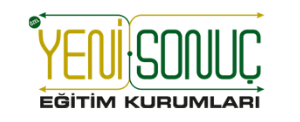Amortization in accounting is a technique that is used to gradually write-down the cost of an intangible asset over its expected period of use or, in other words, useful life. This shifts the asset to the income statement from the balance sheet. A loan amortization schedule is a table that shows the breakdown of each payment made towards a loan. Accumulated amortization is the total amount of amortization that has been recorded for an asset over its useful life. Mortgages are one of the most common types of loans that use amortization. The borrower makes regular payments towards the loan, which are used to pay off the principal and interest.
Get a Free Demo with 70% OFF CTC-Grants for Your Business Efficiency!
These details are usually outlined as soon as you take out the principal. When this happens it can be fairly easy to calculate exactly what you need. If you pay $1,000 of the principal every year, $1,000 of the loan has amortized each year. You should record $1,000 each year in your books as an amortization expense. This content is for information purposes only and should not be considered legal, accounting or tax advice, or a substitute for obtaining such advice specific to your business. No assurance is given that the information is comprehensive in its coverage or that it is suitable in dealing with a customer’s particular situation.
Can intangible assets be amortized?
It expires every year and can be renewed annually without a renewal limit. This situation creates an asset that never expires as long as the franchisee continues to perform in accordance with the contract and renews the license. In this case, the license is not amortized because it has an indefinite useful life.
Managing amortization of assets
In the course of a business, you may need to calculate amortization on intangible assets. In that case, you may use a formula similar to that of straight-line depreciation. These assets can contribute to the revenue growth of your business. An example of an intangible asset is when you buy a copyright for an artwork https://gps-lib.ru/article/newgps2.htm or a patent for an invention.
Amortization Schedule Calculator
Depending on the type of asset — tangible versus intangible — there are differences in the calculation method allowed and how they are presented on financial statements. Understanding these differences is critical when serving business clients. The amortization of intellectual property is calculated based on the asset’s cost, useful life, and expected future cash flows. The length of the loan, the interest rate, and the amount borrowed all affect the monthly payment. A mortgage calculator can be used to estimate the monthly payment and the total cost of the loan. Assets with variable costs or usage patterns may require more complex amortization schedules, adding to the accounting workload.
Another common circumstance is when the asset https://host2k.ru/library/nesobstvenno-hudozhestvennoe-tvorchestvo-shukshina-poetika-stilistika-tekstologiya47.html is utilized faster in the initial years of its useful life. It is the concept of incrementally charging the cost (i.e., the expenditure required to acquire the asset) of an asset to expense over the asset’s useful life. Interest-only loans are a type of loan where the borrower is only required to pay the interest charged on the loan for a certain period of time, typically 5-10 years. Negative amortization can occur with certain types of loans, such as interest-only loans and adjustable-rate mortgages. Negative amortization occurs when the borrower’s payment is less than the interest charged on the loan. As a result, the unpaid interest is added to the principal balance, which increases the loan amount.
And then, to easily manage the company’s assets and measure the value of depreciating assets, you can use the asset management system. The system can also track asset information in detail and create asset value reports with relevant metrics making it easier for you to manage your company’s assets. Next one, you can use a financial management system to optimize the company’s financial management and meet client needs to the maximum.
What Does Amortization Schedule Mean?
Amortizing an expense is useful in determining the true benefit of a large expense as it generates revenue over time. The amounts of each https://kandinsky-art.ru/library/kandinsky-istoki18.html increment of a spread-out expense as reported on a company’s financials define amortization expenses. Amortization is almost always calculated on a straight-line basis. Accelerated amortization methods make little sense, since it is difficult to prove that intangible assets are used more quickly in the early years of their useful lives. The accounting for amortization expense is a debit to the amortization expense account and a credit to the accumulated amortization account. The following journal entry example shows an amortization expense of $1,000.
- More expense should be expensed during this time because newer assets are more efficient and more in use than older assets in theory.
- Loan amortization can also be used to calculate the payments on other types of loans, such as car loans or personal loans.
- Let QuickBooks accounting keep you organized and keep tabs on all your business finances, including loans and payments.
- Loan payments are the regular payments that are made towards a loan.
Amortization (definition)
In accounting, the amortization of intangible assets refers to distributing the cost of an intangible asset over time. You pay installments using a fixed amortization schedule throughout a designated period. And, you record the portions of the cost as amortization expenses in your books. Amortization reduces your taxable income throughout an asset’s lifespan. Amortization is an activity in accounting that gradually reduces the value of an asset with a finite useful life or other intangible assets through a periodic charge to revenue.
